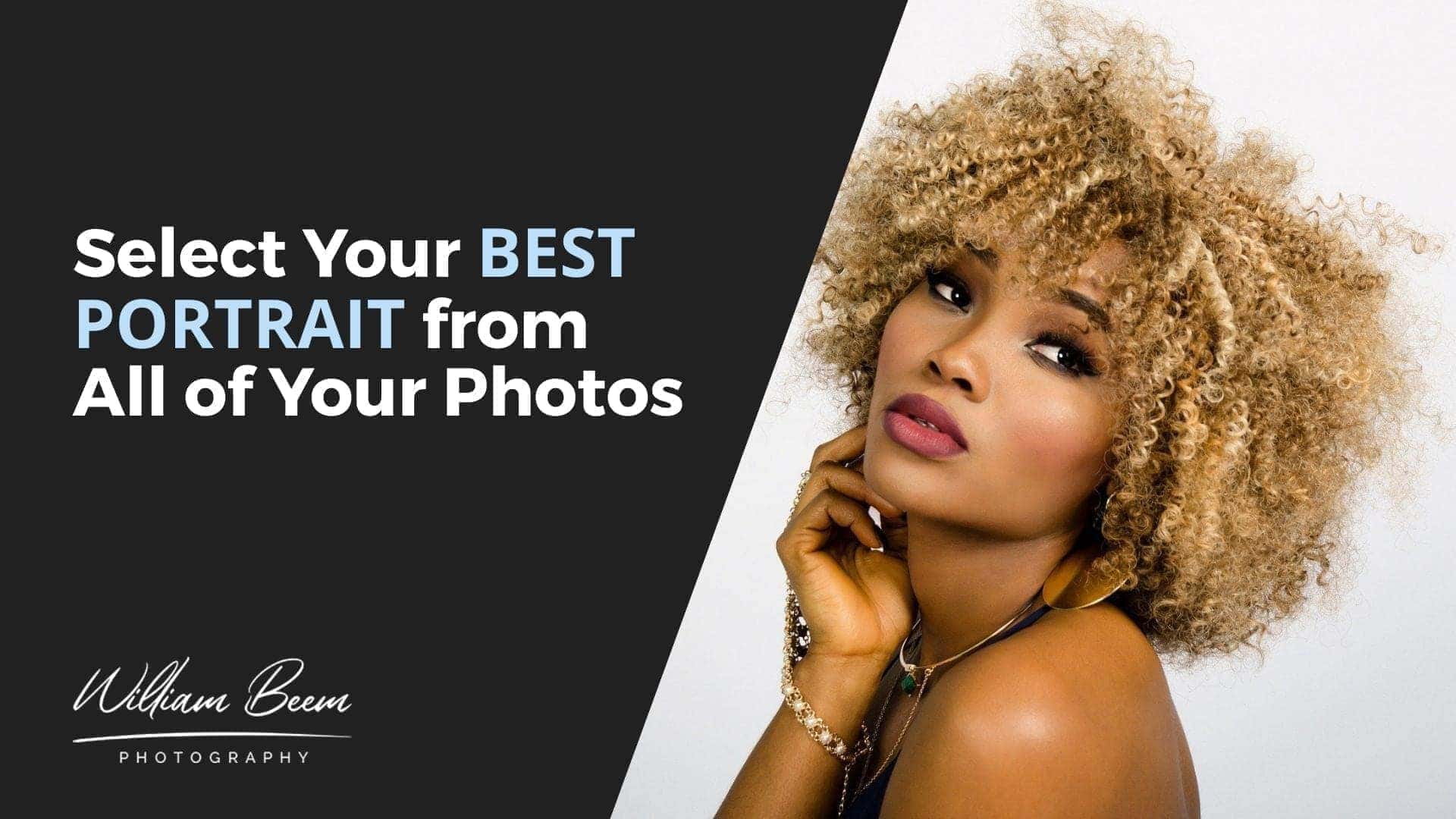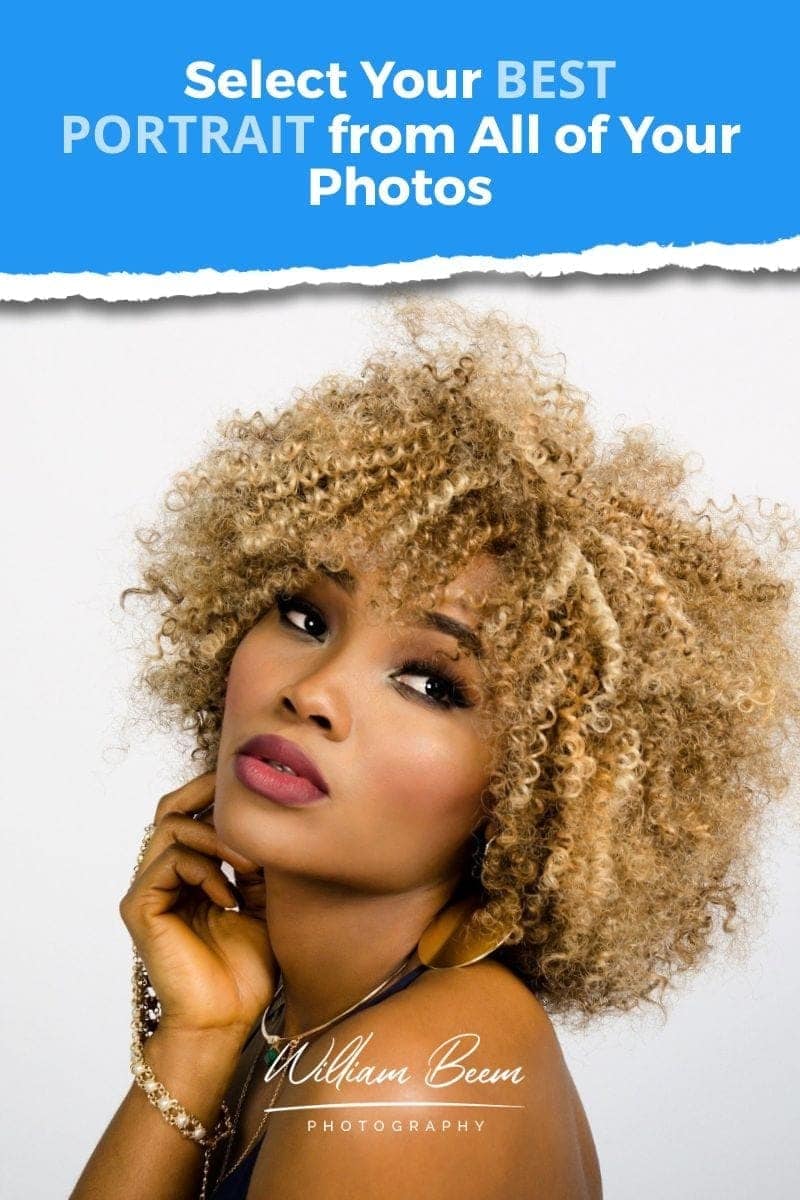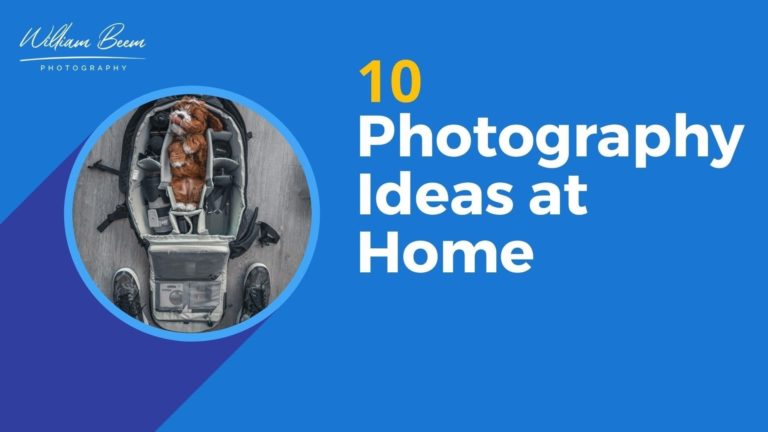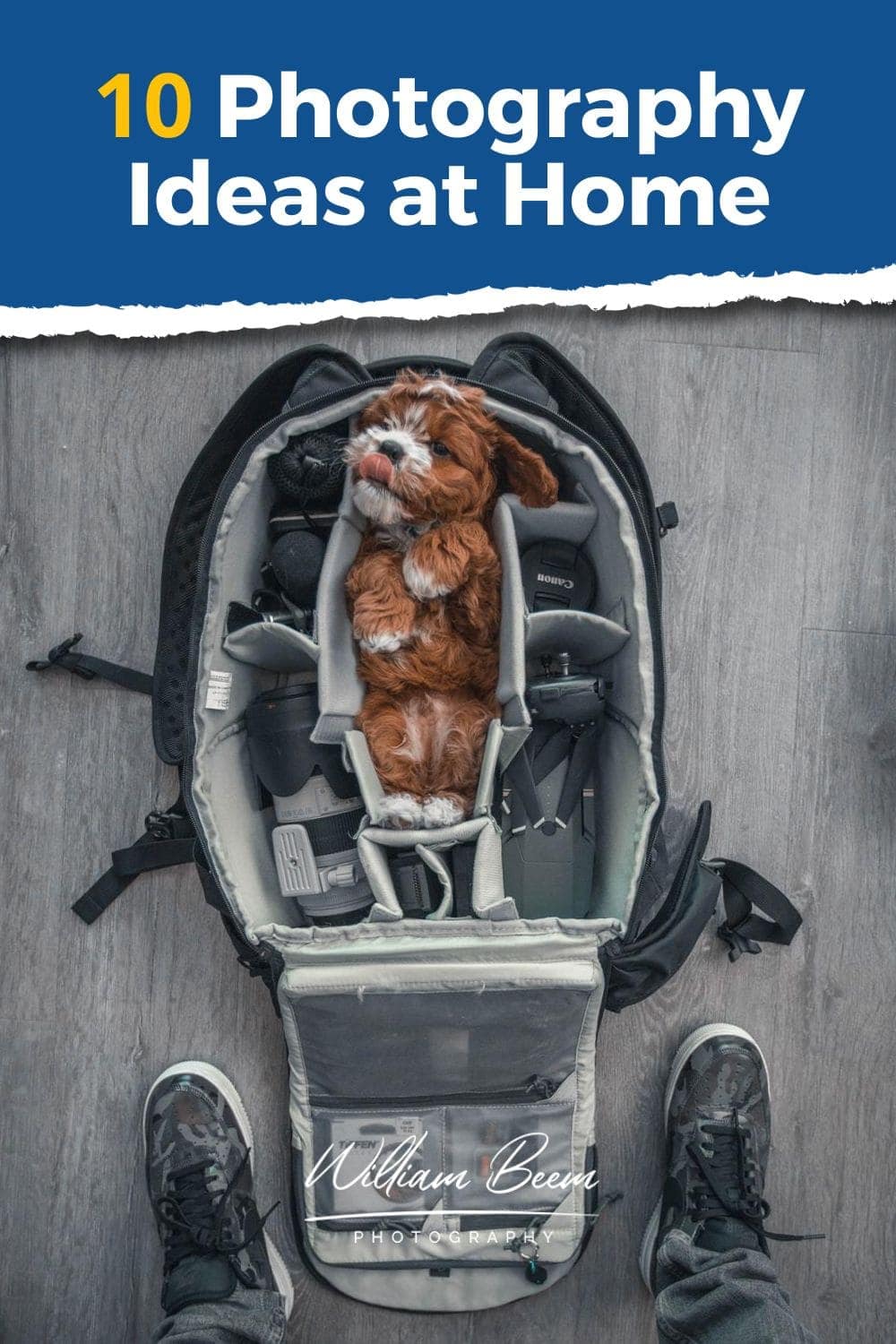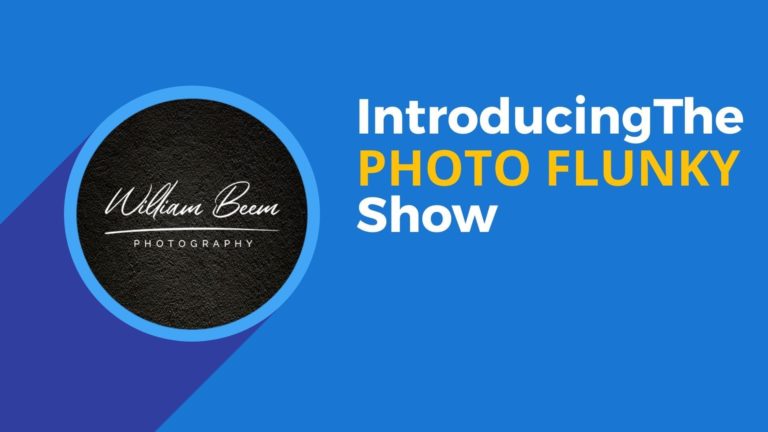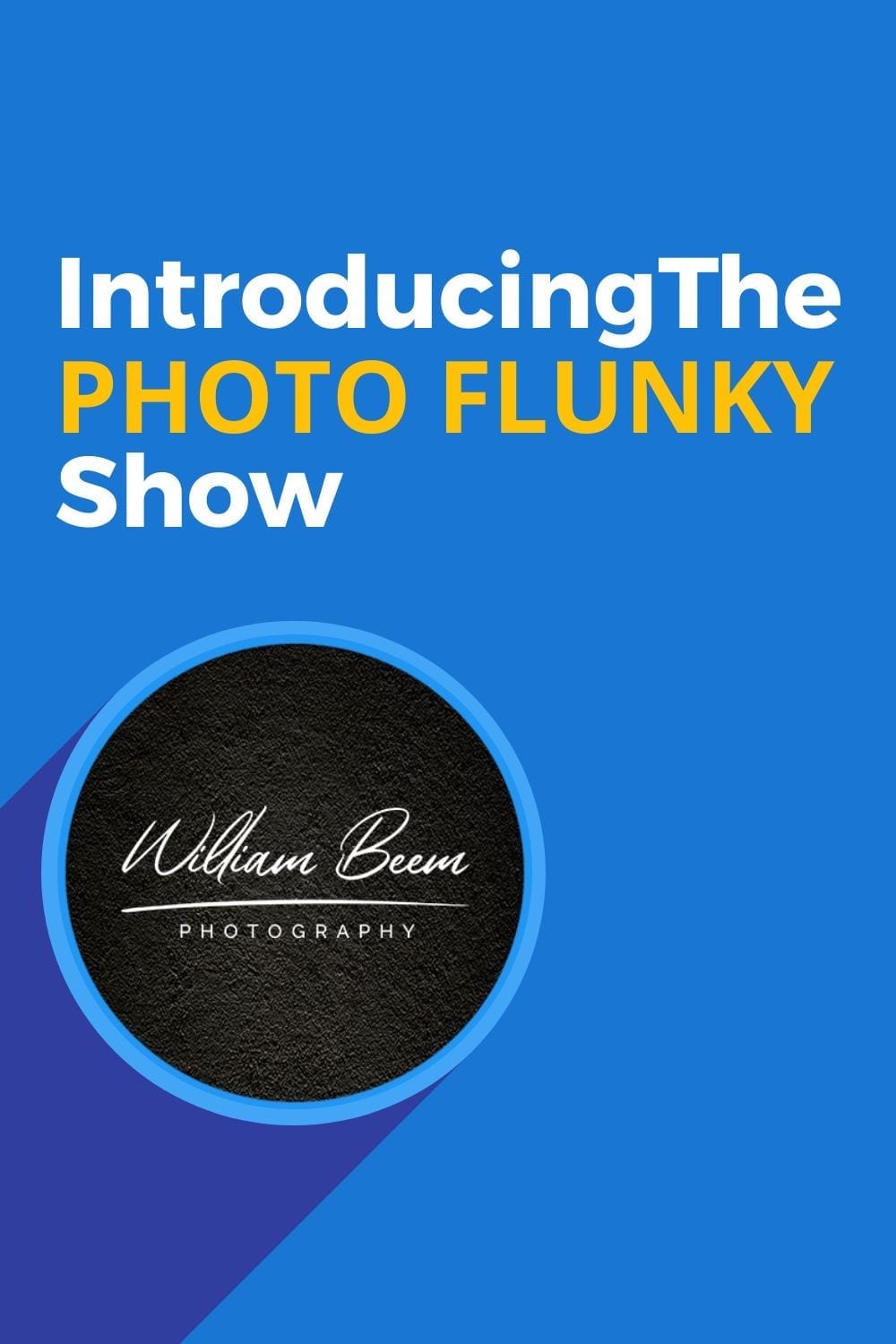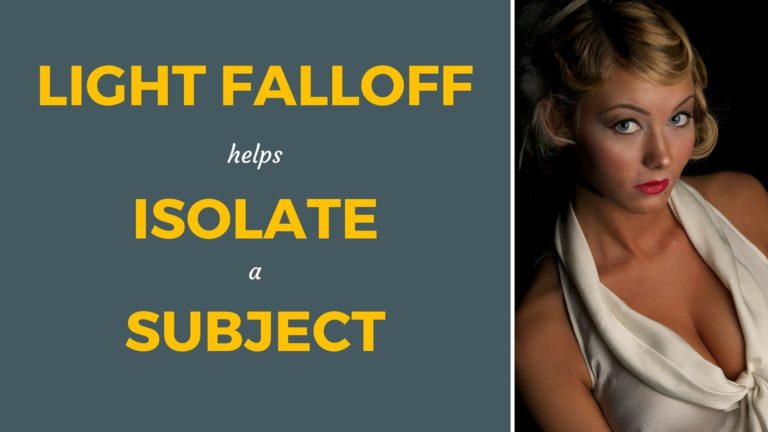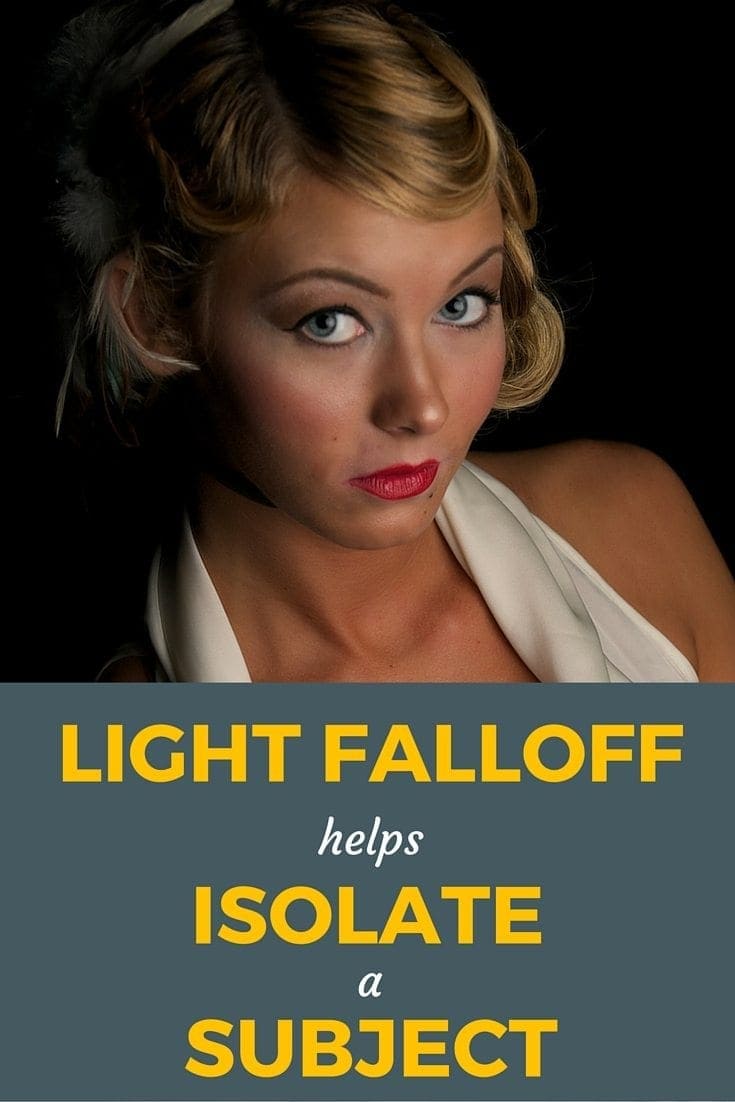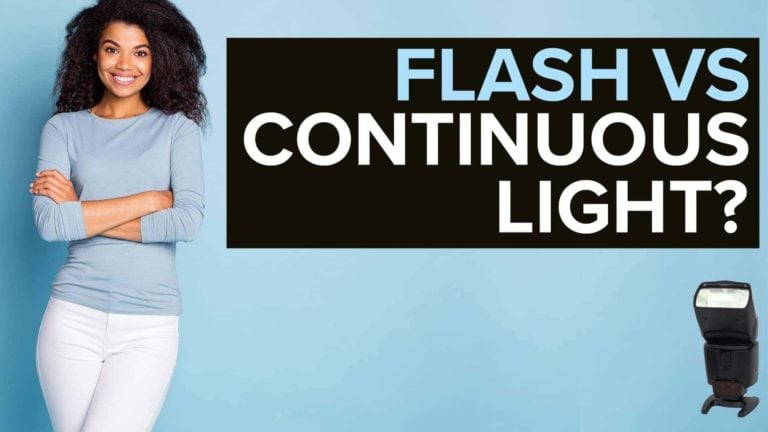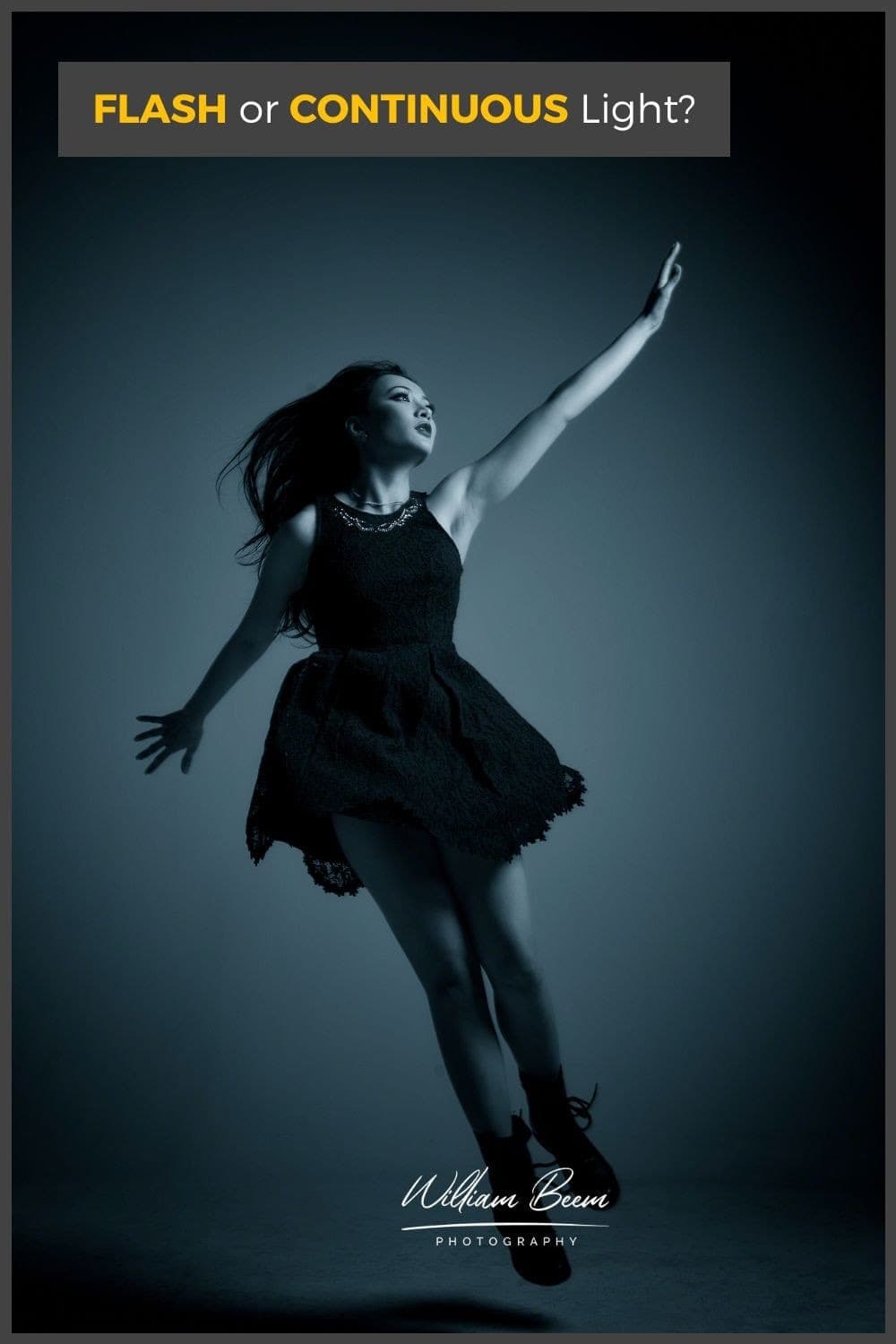Affiliate Disclosure: We earn a commission if you purchase through one of our links at no additional cost to you.
How do you find your best portrait after you finish a portrait session?
The answer comes from editing your photos, and that’s what we’re going to teach you in this episode. Editing isn’t the same as post processing, though that’s a common misconception. Editing means to eliminate the stuff you don’t need until you get to the best result.
We’ll give you a simple process to follow and tell you some of the important decision points you need to make when editing your portraits.
The Best Portrait May Not Be What You Think
More than once, I’ve seen people choose a portrait for post processing and delivery by simply scanning through the thumbnails. If you take the time to go through the editing process, you end up thinking about issues you may have never considered before.
Why?
Because there may be a better, stronger portrait for you to share than the one that just popped up on your radar. No doubt you have a lot of good portraits in your collection, but you want to show your best portrait as an example of your work.
That’s where the editing process helps you truly understand your best work. It also helps you find things you don’t like, so you don’t make the same mistakes on your next portrait session.
Listen to this episode to find out how to edit your portraits and isolate your best work.
Time Stamps
You know that time after you've gone on a portrait session, you come back and you've got dozens. If not hundreds of photos. And you're looking for the one that really tells the story, the one that's going to represent everything that you did well, that's what we're going to talk about today is how to pick that one on I like your picture. I'm William Beem welcome to,
I Like Your Picture. The show that helps you improve your photography with visual storytelling. What is visual storytelling is a method of approaching your photography with a knowledge of who you're trying to serve with your photos and what emotion you want to make them feel. We encourage you to concentrate on your subject, light and background to create a photo. Your audience loves.
I'm glad you found us. Hi, I'm William Beem. Today. We're hoping that you can take away three things from this episode. One of them is going to be the correct meaning of editing your photos. And I know that sounds kind of like I'm a teacher, but it does. Doesn't it I'm being picky, but that's really actually important. And it's something that I want to make sure that you understand.
As you're editing your photos, we're going to talk about how to organize your photos for editing. We're going to talk about what you want to look for when keeping or deleting photos. Basically this episode is all about taking all those photos that you've taken and the portraits you have and saying which one is going to be the one that I keep, the one that I process,
the one that I'm going to share out of this session, rather than sharing all of the photos. Lee do you ever share all of your photos. No, first I delete any that came out like black or totally white. Just in case you didn't know if you thought that, you know, any other photographers didn't have photos like that, they all have photos like that. Everybody hits the shutter at the wrong time.
They've got pictures of their foot when they're walking. They've got blurry photos. They've got things where the flash didn't fire, they've got things with a flash fired right in the lens. If you've got blurry photos like that, don't feel bad. You are in the running with some of the biggest professionals in the whole industry. Right now, I don't have any photos like that.
Cause I delete them really quickly. What I want to talk about is, you know, basically the process of selecting your best photos, that's what's called editing. A lot of people think of editing as when they're going and doing their post-processing. Editing is basically removing the stuff that doesn't matter. The stuff that you don't want to show. Taking out the trash. It really taking out the trash and people have different ways of doing their editing.
And Lee actually brought up the first thing. The first thing you want to edit are the mistakes. Like the really obvious ones are so quick to just get out of the way at the start. Yes. And Lee, and I have very, very different styles of editing our photos. And we brought this up before, but I'm gonna bring it up again because Lee's way is,
well it's Lee's way. I was trying to avoid saying that because I really don't agree. All right. So you've got a card full of photographs. You've got Lightroom. Yes. What happens? I put the card in and I don't import all of them. I kind of scan, you know, the, the batch of photos that I've got. Cause that tends to import immediately after I've done photo,
like taken photos. Um, so I do intend to have two photo sessions on one that might change if, I guess if you do more than one thing. Yeah. Basically you finished your photo session and then you immediately go and get them into Lightroom. Okay. So I'll kind of scan through the thumbnail view and I actually select the ones that, um,
that I want sometimes when I know that I've got a lot of like that, I'm pretty happy with most of them I'll select all and then I'll go. And de-select any that look, um, like duplicates or any that have obvious issues. Sometimes you can see right off the bat that there was a focusing issue. Exposure issues. I, I guess and white balance,
usually you can work with that, but if it's just kind of a - eh - kind of photo or it's similar to , a few others. It's just easier for me to cull that immediately. And then I import the ones that have potential. All right. So when you're looking in reviewing these, what size are you looking at full size images or are you looking at the thumbnail? The thumbnails, but I do enlarge the thumbnails. So I'm not looking at the, you know, the, like the default little ones that you may come bigger. I think I have like possibly six on a screen so I can at least see enough to do a decent culling. I just find it so much easier to just not import stuff.
Cause it also takes time, you know, to, to import things. I got a little laptop that isn't crazy powerful. So if I upload 300 photos, it's going to take a lot longer than if I do 150. So why upload stuff that, and then I have to go and wait and delete and sort through. So yeah, that's, that's kinda my approach.
Okay. I absolutely agree with not importing the ones that have obvious mistakes. I mean, if it's, if it's black and there's no detail there, I don't know why you would import that if it's all white, because there's too much exposure, you can't save it. If it's a picture of your foot, if it's extremely blurry, all those very obvious mistakes.
I agree with you completely not to import it. Unless it's supposed to be a picture of the foot. I mean, if you're taking a photo of your foot, Why would I take a photo of my one foot? Why wouldn't I take a photo of both feet? Anyways, if I'm a portrait photographer and I have a subject and the photo shows up of my foot,
that's a mistake. Just so we have that done. I've got a picture of someone else's foot, then that might be art. But if it's my foot, it's a mistake. My idea though, is once you've got that very, very high level stuff, you know, don't select it. Don't bring it in. Don't import it, but I'm still going to bring in everything else because I've got a different system of how things work for me.
And I understand why it doesn't work for Lee Lee. Isn't really doing portrait photography that often. No, almost never. I'd say in the last few years, In the last couple of years, but I mean, there are times that you'll take photos of people, but you're not necessarily trying to go out there as a portrait photographer. I'm not crafting portrait photo.
You are crafting something different and you'll take multiple photos of the same setup. Yeah. Well, to me, portrait photography is the same way. I will take multiple photos of a subject and they're going to be very similar to each other. The difference between portrait photography and your photography is that my subject also moves. Whereas your subjects are stationary. They're not moving.
They would behave and stay exactly where Exactly. So in your case, only the only thing that moves is you and your camera. The subject stays where it is. In my case, I move and the subject moves and we're talking sometimes slight in imperceptible moves on the surface. That's why I asked you if you were looking at a thumbnail or not, because there are things that you just won't pick up on a thumbnail or a smaller version of a photo.
You needed to see something a bit larger. So I start at the very high level of getting rid of the mistakes. Don't even import them. But then I go ahead and I import them. And this is where people get into a bit of a debate. Do you use collections or do you use keywords? I use key words. Other people use collections.
I don't think it matters for this purpose. So long as you have a way of identifying the photos that you've taken. I use keywords as well. I'd say, start there. Everything is in this one portrait session, you've got them tagged or you've got them in a collection. Doesn't matter which one. And you can identify these all belong together. Now the next step that I want you to do is to start breaking them out into groups.
And when I say groups, I mean, photos that look alike, like they were the same set, the same composition. And then you start a different series of taking photos. In your case, Lee with your flat lay photos, you may do a number of stuff Top-down. You may then look at something at an angle. To me, those would be two different groups and you may change your set. That's yet another group. I'll tell you something that I had to get in the habit of consciously thinking about though.
Because I'm a little bit trigger, happy with the culling keys. I do usually I'd say almost always take more than one photo or a batch of photos that are the same, but at different focal length, like different for different crops. And I have some times blitz through the thumbnails and go, Oh yeah, those two are the same. And then realized I'd left some wiggle room,
maybe for a square crop or something. I'd have to go back and import that photo. Yeah. I think that's a good point as to why you don't want to necessarily just fail to import everything that's useful and looks good because you got to remember your purpose of why you took the photos and you may have multiple purposes for the same composition. I'll tell you,
when you get down these groups, you start, you may be asking like, well, why do you have so many photos that are basically the same? And you got to pick yourself out of that. Some people shoot on burst mode and you go in there and you shoot a burst of five or six shots. And then you're looking at 'em. Okay,
well, which one do I take? Do I just eeny meeny, miny Mo? No, we're going to get down to what you look for a little bit later in the show, but the idea is that you're going to have multiple photographs. Some of it may be from burst mode. Some of it may simply be from working the scene and working with your subject to bring out the expressions or the pose or gesture,
whatever it is that you want. And those are the things that are going to differentiate what you look at. That's why I say, create the groups first and then go back and say, okay, I know that out of this group, I'm looking for something. That's going to be the portrait that I give to the subject. Then you may go through the group again,
say, this is the portrait I want to give to the hair and makeup stylists. They may not be the same. And the same thing happens with, do I need this for a vertical for Pinterest? Do I need this as a wide screen for some other social media or sharing site? Or do you need something for print? And you kind of keep those things in mind as you're going through your photographs and you do this with each group.
Here's what you look at. Or here are the issues that you look at to review in each group. The first thing I'm just talking about is strong versus weak photos. When I mentioned that to you. Lee what do you think of with strong versus weak as far as a portrait portrait? Oh yeah. What's, what's a weak portrait to you and what's a strong portrait to you? A week.
Portrait has kind of average or a sloppy kind of composition and maybe the pose. It could be something to do with lighting. It could just be one of these things. I think anything that is a bit of a deal breaker, even if it's a slight workable one, potentially weakens the potential of the photo. A strong portrait to me would be so in the way you've got the expression you've got contrast.
And I know that these are things that you can work in editing, but you've got, you've got some kind of, there's a presence to the person. First off to me, this is editing. I'm looking for things to keep in and things to delete. That's okay. I like correcting you because you correct me so often all the time. Anyways, to me,
a strong photo, you know, when you see it, it's got presence. As, as you said, there's something about it that you look at and you're like, wow, that's good. Yeah. If you got one that says, wow, that's good, flag it as a pick or whatever you want to do to keep it. If it's weak and you know that it's weak right off the bat,
that's kind of a high level judgment. But if you, if you look at it and say, it's weak, don't start looking for reasons to save it because you've got plenty of other photos that you need to go through. Kill the weak ones. All right. So as we're going through, the next thing I want to look at is the composition.
And am I happy with that? For a portrait, sometimes, if you are moving in my mind, what I would call too quickly, you may have something where you've kind of cut off part of the person's side. For example, like if you're looking for a head and shoulder shot and you've got like part of their left or right arm, that's outside the frame.
Yeah. If there's part missing on one side, this person on the other side, and you're looking for a portrait shot that has balance, it has balance, it has symmetry and you don't have it in your composition. Get rid of it. Don't worry about trying save it. It's like if you've made a compositional error and that doesn't mean that you can't crop your photo in to correct the composition,
if all the elements you need are there and all you gotta do is crop something out or just make the, maybe change it from a horizontal to a vertical portrait. Nope. That works nicely. So no one says you can't crop. So with the idea of the composition is look and do you have a good composition with that photo? If you can't crop it to the right way,
or you've already in camera cropped part of your scene out or your subject out, get rid of it. All right. Lee's nodding her head so we can move on. The next thing I'm looking for is expression and gesture. And basically this is the body language of someone, you know, what's, what's the body, what's the language on their face.
What's the language with their body. And does it match what I want out of this portrait? It's the communication in the portrait. Yeah. And I'm not going to tell you what's right and what's wrong because that really depends upon the portrait that you want to take. And what the story is that you want to tell. how is this person supposed to look inside of your portrait?
And if they're supposed to be, you know, welcoming and they look like they've just had a long day of shooting photos, that's not going to be your favorite one to keep. So you're looking for something in their expression, something in their body, language and gesture could be with their hands, whatever it is that their body is saying to you, if they are...
And this happens from beginning to end, the yield, notice that your subject is kind of go through a bit of phases at the beginning. Things probably aren't so great. They're warming up to it. Yeah. If you've been going too long, they're thinking, is this ever going to end? And those things, yeah. And this can show up inside of your portraits.
So you're looking for that. And I think that you probably want to take a few portraits as you're going through your session, allowing them to warm up and get into it. And then when you see that they're starting to slump off, then you said, okay, let's wrap up this one and maybe take a break and move onto the next pose for the next scene,
whatever it may be. Yeah. This is one of my favorite things and it's not necessarily definable, but it's called attitude. Oh, I like that! I know you would because Lee has lots of attitude. You're looking at the person and this kind of goes along with expression and gesture, but what's the attitude. What's the vibe that you're getting from your subject.
Now we talk about like a dead fish expression. There's no attitude at all in that. There's not. We've got, and this seems to be a common thing with aspiring models. They just go out there and they have this blank expression on their face. There's no attitude whatsoever. I want to see some attitude. I want someone who's a little bit cocky.
In some cases I want someone who maybe is a little vulnerable in some cases, but whatever the case may be, this is where a bit of an actor or actress needs to come out in your subject. And what you're going to find as you're going from shot to shot is that they don't maintain attitude consistently from one shot to the next. So you may be looking for attitude and a shot and some shots,
some shots don't. So that could be one of the criteria that you say, I'm either going to keep this, or I'm going to throw this aside. Yeah. Related. That is confidence in what I'm looking for confidence, it's slightly different than attitude. I mean the two can go together, but it also is the same with beginning, middle and end of your portrait session.
How confident is the person in front of the camera? And next to that is comfortable. Are they giving you a confident expression with whatever you're looking for? Are they comfortable in front of the camera? You know sometimes when you're taking photos and then something goes wrong, it might be equipment related. It might be, you're just a challenging pose you're trying to get,
I mean, we've had some of those when you were doing some photos for me. And you start focusing so much on getting it right. That's sometimes the attitude or the expressions or other elements kind of start to get lost and fall away because you're, you're just trying so hard not to mess this one thing, You know what? Everyone's human, your subject and yourself.
The things that you say to your subject as a photographer are going to affect their attitude. They're going to affect their confidence. They're going to affect how comfortable they are on the set. Now you're culling things through and you're learning not only what you want in your portrait session. Now think back to when he took that shot and said, what did I do?
Or what are the subject do to get this look? How do I either do that again next time? Or how do I make sure I don't do something or say something that throws them off their game? A very simple statement from the photographer who a lot of us have photographers kind of tend to be technical in nature. And we may make a comment that isn't meant to be derogatory or insulting or anything like that.
But the people who are in front of the camera are often much more creative and emotional. And I think they can take some things that are said as criticism. Especially if you call your model a dead fish. Yeah. I use that phrase here. I wouldn't recommend, you know, going in your model say, would you stop looking like a dead fish,
please? That's going to really hit their confidence. It may give you a little bit of attitude. Yeah. Or if you do, if you know them will make cause him to laugh, like you said that to me, you'd get a very different reaction to what you'd get from a stranger. All of this stuff kind of goes back to your relationship with your subject.
How well do you know them? If you just met them or have you worked with them a few times before? You can crack jokes with people, see what kind of reactions you get. And that's why you take a lot of photographs of the same thing. Even if I'm doing just a headshot, I want to get a lot of different expressions. I want to get a lot of different looks out there because I don't know at that time,
which one's going to be the best. I've got an idea of what I want. Ideas are like battle plans. You know, they always fail as soon as you engage the enemy. So the portrait session is the enemy, not the model or the subject. The act of going through something is never going to go a hundred percent to plan.
But as you start working on editing your photos and seeing which ones you keep and which ones you reject, it gives you an idea of what you want to do during your next portrait session. You're looking for some attitude, you're looking for some confidence and you're looking to see if the person is comfortable in front of the camera, because I guarantee you, even though the people who are looking at these portraits,
aren't thinking of those words, it will come across to them. I mean, Lee looked up some portraits and said that person, you know, really captured the essence of who is there versus others that said, okay, it's a snapshot? Yep, absolutely. And that's normal. I mean, we all do it. Sometimes you get lucky. Sometimes you just weren't paying attention.
Sometimes it's, it's purposeful. I need just plan better. Or, you know, you just managed to capture that moment. There's so many reasons, but there are definitely very stark standouts. And both ends of the extremes. It really is true. This is where you observe when you're going through one of your groups and trying to cull those photos down and edit the photos.
This is where you look very closely at details that you may have never considered before. So the next item we're going to move on to are the three things on your face that you can control. Your eyebrows, your eyes and your mouth. I mean, our daughter loves it. She's independent. She moves them independently. She got her driver's license, she's,
Oh, my eyebrow looks really great in that shot. Good. The guys looked at me with what I said. Yeah. I don't know either. I don't understand. I just found out that eyebrows are a thing. And it was just the one eyebrow, wasn't it? Yes. She said my left eyebrow looks amazing. There, you got that going for you.
That's something that your subject can control. And you're going to be looking at eyebrows when you look at these photos, because if it's tweaked just the wrong way or the right way, that's another decision point. Do I keep it or do I get rid of it? Keep in mind. You're not looking at each photo independently. You're looking at them in relationship to the other photos.
I like this over here, but I've got a stronger photo that I've already looked at. Well, if this one's not stronger than the ones that you've looked at before, get rid of it. It's really that simple, The eyes. I mean, you're looking for sharpness in the eye. People are gonna connect with the person's eyes. If there's nothing else that's in focus,
make sure the eyes are in focus. How open is the eye? Is that okay to have the eye closed? Or do you want to have like, not quite a squint, but you know, Peter Hurley calls this a squinch. In other words, you kind of raise your lower eyelid, which sounds weird. But actually it doesn't take that long to practice and try it.
And, but it gives you a more confident look. It's like, someone's just kind of looking at you and just like, okay, I got you. I understand you. Wait til you get up to my level. But that's the nice thing about, you know, if you've got these wide open eyes and they look like a deer in the headlights that may not necessarily be as cool looking in a portrait as someone who's a bit more comfortable and they've relaxed their eyes.
And that's really what the squinch is all about. It's being relaxed and confident in the portrait. It doesn't work for everything that you want to do. So this again goes back to your purpose. Should someone have their eyes closed? You know what, maybe it's a vulnerable moment. Maybe it's a beauty shot where you're looking at some of the makeup that's on the eyes Or maybe,
maybe your subjects looking down at something. Yeah. So there's, there, there are several numerous situations where closed eyes and not a problem. I think when we're talking about closed eyes and culling closed eyes here, that's where the flash went off and the eyes blinked by accident. Yeah. Well, there's a difference between a closed eye on purpose and a blink because something distracted them.
So if you see a blank, get rid of it. If you see a closed eye, think. Hmm. Does that work well with my portrait? Does it make me feel something about the subject? And that's really what we're looking at with all of these things we're talking about is how does it make you feel and what does it make you think about the person in the portrait?
Either? I like it, or I don't like it. Then that gives you a decision. Whether you flag it as a pick or as you, uh, just toss it aside. And honestly, I'm going to tell you, be brutal about tossing things aside. If there's something that's just really not right with them, toss it. Because if you've got dozens or a hundred photos,
you need to really narrow this down. If you keep everything, then you haven't done the job of editing. One of the things I wanted to mention about eyes is the eyes don't have to be looking at the camera. It's perfectly fine. If you take a portrait of somebody who's looking away from the camera, but if their face is toward the camera and they're looking off to the side and you've got more of the eye whites than you do of the Iris,
then you run the risk of having like some crazy eyes. You know what I mean? And if that's what you're Oh, absolutely. But if that's what you're going for, then that's, that's a keeper. If not, if you don't specifically going for that look. Yeah. And that's what I'm saying. It's like it's lot of people will look at that.
They see too much eye white. It really unnerved them. I'm not saying that you shouldn't ever use it. I would say to use it carefully, but yeah. Be careful of having too much eye white, like the Iris is all the way over on the corner of an eye and you've got a lot of eye whites by the nose. That's a little bit odd. All right.
The mouth is almost as expressive as the eyes. And you can do a lot of things with your mouth. One thing I'll tell you is like, if you've got your lips closed together, you kind of look serious. Maybe you can have like a little curl at the end of your lips. You know, they're just kind of show there's a subtle smile.
I like that. And if you part your lips just ever so slightly, it looks nice. Unless it looks like there's no purpose to parting your lips. But you know, it's like you've parted your lips a little bit. That that actually helps your jaw line. And that's a strange little thing. But if you part your lips, it's almost very subtly and slightly helps your jaw line.
Look a little bit better. You didn't know. I knew that's why I just said it? These are the silly things, when you get to be a portal photographer, you start paying attention to. Even that little squinch that I mentioned with the eyes? That actually kind of slims, ever so slightly, that actually slims your upper cheeks. But you just did it. I'm sitting here watching her.
She just squinched it. She said that in her cheeks went up. That's because I said "Oh". Cause my wrinkled up my nose. Well, I wasn't, I didn't look at your nose, but your cheeks looked great then. Well, your upper cheeks, the rest of your cheeks were the same later. All right. I want to give you another hint.
Look at shoulder width. This depends on how do you want to present your subject? As far as their width, if you're looking to slim some people, don't have them put their hands on their hips because that will make their shoulders fit wider apart. There were particularly for female subjects. If you want them to look a bit more slender or slimming,
that's not the way to do it. If you put their hands on the hips, that's the power move. That's like the Superman pose. The reason they have Superman pose like that is they wanted to show you just his broad chest and big, strong shoulders and all that stuff. And they made it. They wanted to make it look wider. If you want to do a propaganda shot,
that's a great thing to do as well too. But it is not good if you want to slim somebody down. So if you want to slim somebody down, you probably want to have them have their arms at their side and maybe the shoulders a little bit back. And that's going to be much more slimming. Yeah. Or just slight tilt or an angle.
Yeah. Well, angles work great. Because if, if you got a little bit of geometry going on, that's more interesting than just standing there, dead, straight at the camera. The last thing I wanted to bring up, and this is by no means an exhaustive list of things that you should be looking to review, are hands. A lot of people pose with hands on her face or hanging over their head.
It really looks unnatural to me. Because I don't walk around or stand anywhere with my arm or my hands up against my cheek or over my face. And even when you're doing that, what do your fingers look like? You know, you have a photograph ruined by a model who put her face in her hand, and then there's this one finger that's looking like a hook.
And it's that subtle. You know, you can see hand gestures. If they don't look natural and comfortable, I'd get rid of it. Hands are difficult. I mean, it's one of the things that I hate the most when someone's taking photos of me, because I don't like having my hands in the photos unless I'm holding something or doing something with them so that I tend to put them behind my back.
And I think that that also gives a certain look. And it's not a look that I'm necessarily trying to portray as much as I just want my hands out of the way. I think what I'm talking about is definitely more along the lines with female subjects than male. You don't see a lot of men touching their face in their portraits. No, maybe they're resting their head in their hands.
And that could be interesting, particularly if you're taking the story as this is someone who works with her hands. Hands are fascinating for people who are working with their hands. And I liked that scene. Even feet like there's portraits of dancers and their feet. You know, maybe if a ballerina that looks so graceful in their costume, but then they take off those toe shoes and you see how battered their toes and feet really are.
It's, it's a rough life. And, and that kind of thing I think is interesting, expressive and tells a story. But when you've got a subject who's holding one hand on her hair and another hand on her cheek, it really, to me, it looks like she's got a jaw ache. It's just not a natural pose. And that's why when I say,
look at hands, even if the hand belongs there, look at the fingers. Are they all positioned in a way that's good for you? Because it's hard to describe, but sometimes you can look at one finger and think, Why is it doing that? And if you're seeing that, because you're paying attention to your own portrait, anyone you show that portrait to is going to see that same thing,
and they're going to be thinking, why is her finger like that? Yes, that's just, my advice is look for these very subtle little things and you become much more critical as you're going through your portraits. Then you can use this experience to guide yourself and your subjects the next time you go on a portrait session. All right. So hopefully by the time you've gone through and reviewed all these things,
you're down to maybe half a dozen photos that you said, okay, these all have potential. How do you get to the one? If you're in Lightroom, you grabbed them all together. And they're all selected like five or six photos, whatever it is. If the letter N that's for survey mode, which makes perfect sense that the letter end does not exist in the word survey.
Absolutely. But then that, that just shows you your half dozen photos on a screen and you start looking at them and thinking, is one weaker than the others? Get rid of it. And then what's the next one. And you just kind of go through and compare them until you say I'm down to maybe these one or two. Pick one! And you won't be wrong. If you're so stuck between two portraits and you need to pick one,
just pick one. I don't care if you flip a coin. Because if they're that strong, all you need to do is have one of them represent your work. And you can go through all the same criteria again, to say which one is stronger, or you can just pick one. But that is really what you need to do to go through your list of dozens or hundreds of portraits and come down to the one that says,
this is the one that I'm going to show as representative of my work. Hey, thank you so much for joining us on I Like Your Picture. Show notes is going to be available williambeem.com/episode224. And we would love it. If you would go through and subscribe to the show, you can go to William beem.com/itunes. It'll take you there. Or you can just take a look at the show notes page and there's options to subscribe on Spotify and other places like that.
So that way you don't have to worry about wondering what the next show is. It'll just come right for you. Finally, if you have any questions about portrait photography, I'd love to know it. Just go to Williambeem.com/ask. Post your question there, and then we'll answer them later on for you. Thank you so much. We'll see you again next week.
Related Posts
Peter Hurley – It’s All About the Squinch

